The Matchstick Museum in Jönköping tells the story of a time of child labour and terrible working conditions, but also of Ivar Kreuger's fascinating matchstick empire that conquered the world before it collapsed. If you visit Jönköping - don't miss the captivating Match Museum!
Table of contents
Matchstick Museum in Jönköping
The Match Museum in Jönköping tells not only about the manufacturing process, but above all about the people. It follows the children and women who were poisoned and often died in severe pain, but also the brothers who built the factory, the financier Ivar Kreuger who was finally found dead with a gun next to his body, and many others.

Tändsticksmuseet is located in the Tändstick area, west of the railway station in Jönköping, just off the southern shore of Lake Vättern.
A dangerous job - done by women and children
Jönköping began manufacturing matches in the 1840s. In order to maximise profits, they wanted to keep production costs down. It was cheapest to employ children, so many children worked in the factory. The children worked ten hours a day, six days a week.
Matchboxes could be made at home, by both women and children. Matches, on the other hand, were made in the factory. Initially, the matches were dipped in phosphorus. The women and children, who spent their days bent over the poison, often suffered from phosphorus necrosis. This terrible disease began with toothache and inflammation. Later, the teeth fell out, the jawbones loosened and many died. Others survived but were disfigured for life.

Mechanisation and matchstick empire
Over time, production became increasingly mechanised. A "safety match" was developed (which did not ignite without warning in a trouser pocket) and the world began to be conquered.



The match king Ivar Kreuger - rise and fall
Ivar Kreuger, who became known as the 'Match King', built an international match empire with a monopoly on factories all over the world. Around 1930, STAB (Svenska Tändsticksaktiebolaget) controlled 60-70 per cent of the world's match production.

Kreuger was an admired and respected financier in his day, obtaining huge loans and investing heavily on the international stage. The most visible evidence of his success is the so-called 'Tändstickspalatset' in Stockholm, built between 1926 and 1928.
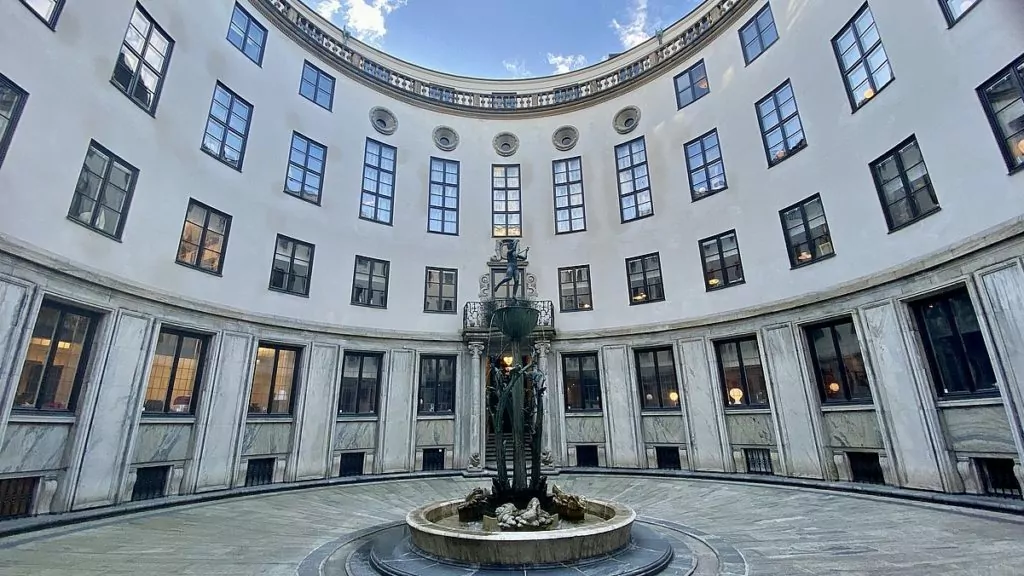
After the 1929 New York stock market crash and the subsequent depression, everything changed. Kreuger was found dead on 12 March 1932 in his Paris apartment, with a firearm next to him.
The official explanation was that he had committed suicide, and it is quite possible that the tight financial situation led him to this drastic decision. However, it has not been proven that it was indeed a suicide, and an alternative explanation could be that he was murdered by one of his enemies in the financial world.
The so-called 'Kreuger crash' shook the world's finances and match workers faced redundancies or wage cuts.


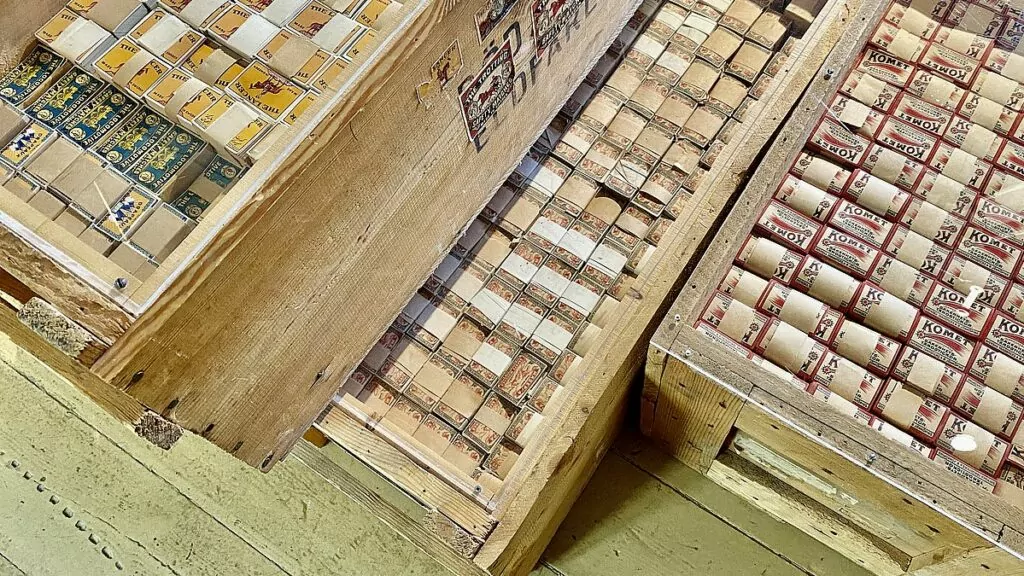
Matchstick labels - and the concept of 'Made in Sweden'
The yellow 'original label' from Tändsticksfabriken in Jönköping is one of the world's most famous plagiarised trademarks. Around the world, expressions such as 'light only against the box's floor' (although it became 'light only against the barn's floor') and 'Made in Sweden' were used. In Columbia, an entrepreneur named his factory 'Sweden' so that he could write 'Made in Sweden' on the labels with a clear conscience. Over time, many new and different labels were made for sale around the world.

Visiting the Matchstick Museum in Jököping
We found the visit to the Matchstick Museum very interesting. We were particularly moved by the terrible labour situation that many people had in Sweden not too long ago. It is so easy to complain about countries where there is child labour and poor working conditions today, but it is not too long ago that we were in the same situation in Sweden.

The match area
The Matchstick Museum is located in the so-called Matchstick Area. It houses a whole series of buildings that once belonged to the great empire. Outside the museum you will find a small letterbox where you can pick up an information leaflet about the area and a walking map. The buildings once housed factories, workshops, laboratories and offices. Nowadays you can find restaurants and small shops here.
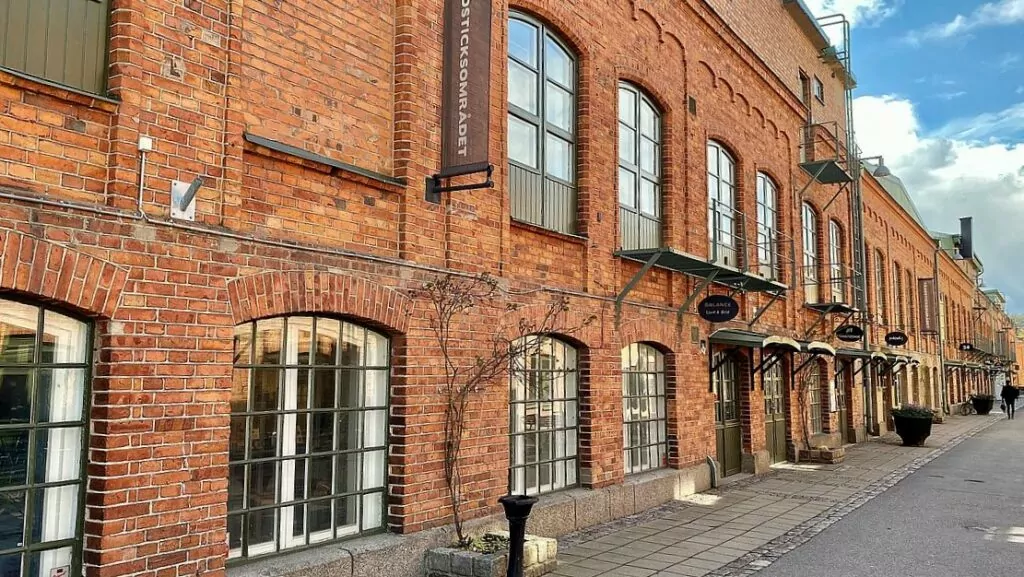


More things to see and do near the Matchstick Museum
I Jönköping you can visit the beautiful Sofia Church and the beautiful city park with its open-air museum and animals. It is also interesting to visit Husqvarna museum in Huskvarna or make a visit to Gränna, where you can learn about the production of candy canes and the Andree expedition. From here you can also take a ferry across to the beautiful and cosy Visingsö.

Kalmar castle - 800 years of war, celebration and power games
Kalmar Castle is a powerful building, which feels both historic and fairytale-like where it travels...
Motorhome pitches in Glasriket in Småland - we tested these 9
There are many campsites in Glasriket in Småland (far more than we first realised!) and...
Visiting Visan's ship - a different kind of monument in Småland
To visit Visan's ship is to take part in the Swedish song treasure, on a...
Lysingsbadets camping - Västervik Resort in Västervik
We have now travelled to Lysingsbadets camping, which is located just outside Västervik. This...
Kosta Art Gallery - exciting art in the Glass Kingdom
Kosta Art Gallery is an art gallery in the Glasriket region of Småland, showcasing glass art by...
Kalmar läns museum - about the regal ship Kronan
Kalmar County Museum offers a very exciting exhibition about the regal ship Kronan, which sank in...
Things to do in Växjö - 15 tips for sights and experiences
What to see and do in Växjö? Växjö is a pleasant city that offers...
Astrid Lindgren's World in Vimmerby - Grandma Anna's secret journey in 2024
Guest writer: Anna Nilsson Spets It was time for the annual secret trip with the grandchildren and...
Fika and restaurants in Glasriket - 7 places you don't want to miss
There are some cafés and restaurants in Glasriket that you don't want to miss! We have...
Ödevata farm hotel and caravan park - sustainable in Småland
Ödevata gårdshotell in Småland is a cosy, simple and natural hotel, where you are also...
Granhult church in Småland - Sweden's oldest wooden church
Granhult Church in Småland is Sweden's oldest wooden church. This fine little wooden church, dating from the 1220s, survived...
Vidinge gård och ställplats - dog-friendly accommodation in Småland, Sweden
Vidinge Farm is a dog-friendly accommodation in Småland, a camping site, a fishing centre and a starting point for...
What to do in Eksjö - 11 tips for the wooden city in Småland
What to do in Eksjö? This town in Småland, often referred to as 'the unique wooden town'...
Kosta Christmas market - a wonderful Christmas atmosphere in the Kingdom of Crystal.
Kosta Christmas Market is part of the Christmas celebrations in Kosta, in the Kingdom of Glass. Here you can experience ...
Visiting a moose park - moose safari in Glasriket moose park
What is it like to visit a moose park? We have long been keen to familiarise ourselves...
The emigrant village in Småland - in the footsteps of Vilhelm Moberg
The Utvandrarbygden in Småland is the area that many Swedes left to emigrate to...
Sauna rafting in Småland - a magical experience at Ödevata farm hotel
We have tested sauna rafts in Småland, at Ödevata Gårdshotell in Glasriket, and it was a ...
Teleborg Castle in Växjö - a fairytale castle in Småland
Teleborg Castle is a beautiful fairytale castle just outside Växjö. Here you can enjoy the...
What to do on Visingsö - 12 tips for Vättern's largest island
What can you do on Visingsö? First of all, you can take it easy and...
Glasshouses and glassworks in Glasriket - guide with map
Did you know that there are more than a dozen glassworks and glassworks in Glasriket? This Småland region...
Tättö Havsbad - nice campsite by the sea
Yesterday we ended up at a campsite at Tättö Havsbad, in Loftahammar north of Västervik. We...
What to do in Gränna - 9 tips for the candy cane town at Lake Vättern
What can you do in Gränna? Many would probably answer "eat candy canes" and that's...
The Kyrkö bog car cemetery - a different kind of attraction
The Kyrkö mosse car cemetery outside Ryd in Tingsryd municipality is an unusual sight, to say the least. My ...
Visiting Kosta in Glasriket - a gem in Småland
What is it like to visit Kosta in the Kingdom of Crystal? We have once again visited this gem in...
Huseby mill in Småland - a well-preserved time bubble
Huseby Bruk is a great place to visit in Småland with old mill environments, castle, park, restaurant, shops and...
Things to do in Kalmar - 17 tips for experiences and attractions
What to do in Kalmar? Well, we'll tell you! Kalmar is a...
Swedish Smålandsvägen - FREEDOMtravel Themed roads
The Swedish Småland Road is a themed road that takes you through beautiful Småland,...
What to do in Jönköping - 17 tips for the matchstick city
What to do in Jönköping? The city is famous for its matchstick history and you should...
James Bond museum in Småland - the world's only Bond museum
James Bond Museum in Småland - why is it here and can it really be...
Lessebo hand-paper mill - try making paper
Lessebo handmade paper mill in Småland is something so special as a still-functioning mill where the...
Planning a trip in the Glasriket - we've tested the 'trip planner'
Did you know that you can plan a trip in the Glass Kingdom with the help of a digital...
Husqvarna museum - and more to do in Huskvarna
The Husqvarna Museum in Huskvarna tells the story of a company that started making rifles in the 17th century....
IKEA Museum in Älmhult - fascinating about a department store
The IKEA Museum tells the story of the huge furniture store founded in 1943, as a mail order company, by...
Blowing glass - try it at the Kosta Glass Centre
Want to try blowing glass? At the Kosta Glass Centre you can create your own...
Trolls in Gamleby - Friends of the Garpe Sculpture Park
Trollen i Gamleby, or Friends of Garpe Sculpture Park, is a different kind of sculpture park in Västervik....
Packrafting on the Alster River - an adventure at Vidinge Gård, Småland
Writer: Helena Bergström Packrafting on the Alster River is a scenic adventure that we have long wanted to experience....
Mönsterås by campervan - festival and camping site
In Mönsterås, between Oskarshamn and Kalmar, we were greeted by a blues festival, long-haired guys in leather clothes, pick-up trucks,...
Things to do in Glasriket - 25 tips for sights and experiences
Writer: Helena Bergström What can you see and do in Glasriket in Småland? We have...
Kronoberg castle ruins in Växjö - Vasa and the Dacke feud
Kronoberg Castle Ruin is a well-preserved historical ruin that tells interesting stories about Gustav Vasa and...
Europe's longest zipline - Sweden Zipline in Småland.
Europe's longest zipline course is in Sweden, deep in the forests of Småland. Of course...
Gamleby camping - Kustcamp Gamleby
Now we have arrived at Gamleby camping, not far from Västervik. The campsite is large...
Have you visited Tändsticksmuseet in Jönköping? Do you have more tips on nice or interesting places to experience in the neighbourhood?
Facts about the Matchstick Museum in Jönköping
- Address: Tändsticksgränd 27, Jönköping
- Location: The matchstick area, west of the railway station in Jönköping.
- Read more: You can find more information at the museum's website.
Tours and activities
- Exhibitions: The Lundström brothers' match factory, Lena - a woman's fate, the work of the hand and the matchmaker's house, engineer Alexander Lagerman, Bernard Hay - an industrialist, the match printer, Satsmästare Wahlbom's workplace, Ivar Kreuger, the match king, and temporary art exhibitions under the collective name "Made in Sweden".
- Guided tours for groups: Under normal circumstances (not during the pandemic) tours for groups can be booked.
- Activities for children: Tasks to solve and try your hand at making your own matchbox.
- School programmes: Lessons can be organised for school groups.
Services and practical information
- Opening hours: During the summer, the museum is open every day (Mon-Fri 10-17 and Sat-Sun 10-15). During the rest of the year, the museum is open Tues-Sun 11-15 (2021). Please note that it is closed on public holidays and opening hours may vary. See the museum's website for current opening hours.
- Prices: Adults 80 SEK and children up to 19 years old free.
- Shop: There is a museum shop with gift items.
Accessibility
- Indoor environment: The museum entrance is at ground level, with a 3 cm high threshold. The upper floor is accessed via stairs or a stair lift (0.78 x 1.0 m) that can be loaded with up to 200 kg. An extra wheelchair is available to borrow if the permobile is too big.
- Toilets: There is a large toilet on the ground floor and smaller toilets upstairs.
- Guide dog: Guide dogs are allowed (other dogs are not allowed).
- Outdoor environment: The area is car-free. A hotel is being built next to the Matchstick Museum (2021), which may cause some restrictions on access.
- Parking: At the railway station (1 hour) or June car park (long term).
History of the match factory
- 1848-1849: The brothers Carl and Frans Lundström built the first match factory on the banks of Lake Vättern.
- 1863: Bernard Hay took over as manager and led the company until 1898.
- 1870: The engineer Alexander Lagerman was hired, and production became increasingly mechanised.
- 1870-1880: The match factory experienced its heyday. The factory area was expanded to include the disused Hospital.
- 1873-1879: Housing was built for the workers in Väster.
- 1890: The workers at the match factory went on strike.
- 1903: Jönköping & Vulcans Tändsticksfabriker was formed through a merger.
- 1917: Svenska Tändsticksbolaget STAB was formed, led by the 'Match King' Ivar Krueger, who sought to create a global match monopoly.
- 1932: The world depression and the Krueger crash affected the entire match industry.
- 1940: The Jönköping factory stopped producing matches.
- 1975: Jönköping municipality took over the Tändstick area.

















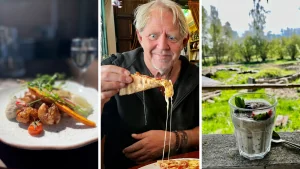
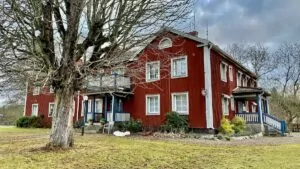











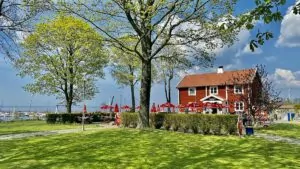


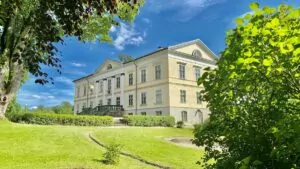








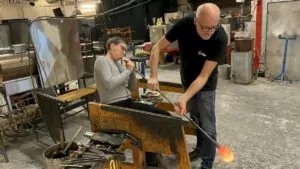






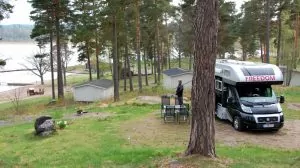

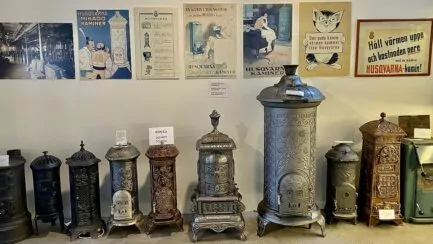







diana's dreams says:
Interesting to know some more hugs
12 May 2021 - 8:15
Helena says:
Glad it was appreciated! Wishing you a nice week and weekend, hugs!
12 May 2021 - 19:48
Ditte says:
What an exciting and interesting visit. I have been here many years ago but realised that a lot has been lost from memory.
Many thanks!
I was invited to Tändstickspalatset in Stockholm a couple of years ago and it was a really fun and interesting visit.
12 May 2021 - 8:40
Helena says:
Yes, that's right! The blog helps us to remember a little more, but you forget with time. Nice that you have been to the Matchbox Palace! We were there at some event a while ago (then we took the photo in the post).
12 May 2021 - 19:49
Ann-Louise Paulsson says:
I've been here but it's probably 40 years ago so I don't remember much. I think I was there on a school trip. I was thinking of doing some tourism in Småland this summer so I'll probably try to bring my family here for a visit then. In my childhood town of Vetlanda there is one of Sweden's two remaining match factories and I know many people who worked there so it's a little extra interesting.
12 May 2021 - 9:16
Helena says:
Understand that the memory fails a little!!! Can think that the museum has changed a bit too, maybe? We thought the visit here was very interesting, a return visit is recommended! 🙂
12 May 2021 - 19:52
Goatfish says:
I have been here at Tändsticksfabriken not too long ago.
Very interesting but also touching story.
Jönköping is a very beautiful city.
12 May 2021 - 12:24
Helena says:
Isn't it interesting, and isn't it touching? Yes, we also saw many nice parts of Jönköping. Coming soon more on the blog! 🙂
12 May 2021 - 19:52
BP says:
Another really interesting and informative post. So much you don't know, but I've said that before;-)
Have mostly been in Jönköping at the Elmia fair as an exhibitor, but never visited the Matchbox Museum, but I have done that now;-)
12 May 2021 - 20:30
Lena+in+Wales+and+Spain says:
Have a nice reunion!
After my visit to the museum in Huskvarna a few years ago, I visited the matchstick museum in Jönköping. We seem to have had the same thoughts.
14 May 2021 - 12:08
Lena - good for the soul says:
Very interesting! I had heard about the Krüger empire, the Krüger crash and his death, but this child labour was new to me. Terrible! And as I said, not too long ago.
Hug Lena
17 May 2021 - 5:52